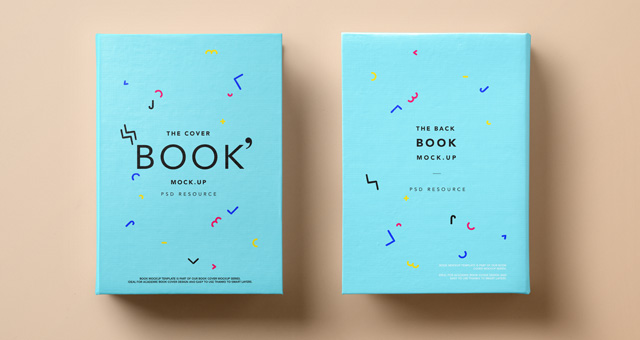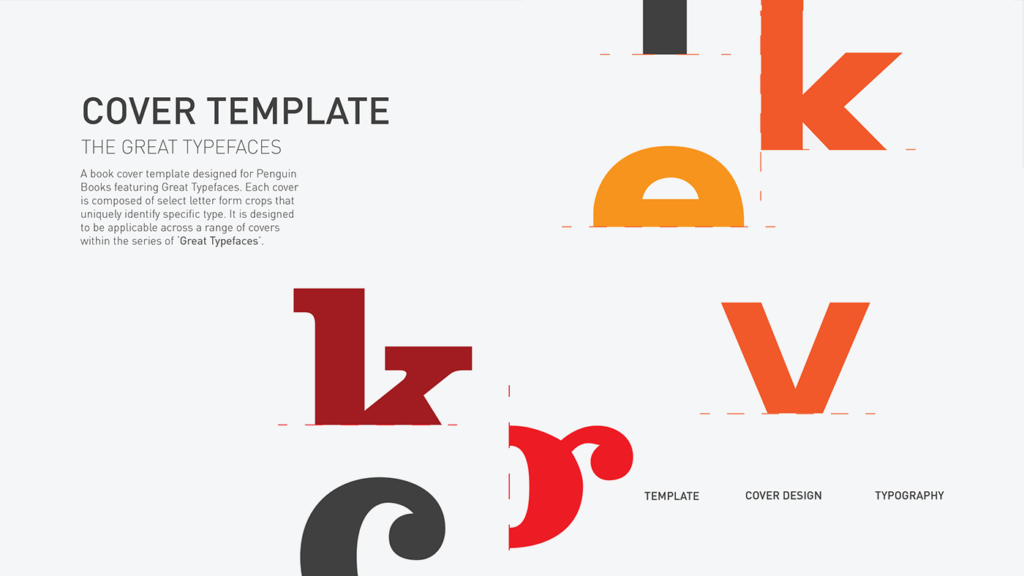Designing a perfect book cover
When you’re looking for a new book, the cover is one of the first things you’ll notice. It needs to be eye-catching and interesting enough to make you want to pick it up and take a closer look. But with so many books available, how can your cover stand out from the rest?
Here are tips for designing a perfect book cover that will help your book stand out from the competition.
- The importance of a good book cover
- What makes a good book cover?
- Book cover designs for different genres
- Using social media to research book covers
- Finding a way around your book cover design
- What are the tools you can use to design your book cover?
- What does working with a designer entail?
- How to source the perfect book cover design pitch?
- Tips for a perfect book cover design
- Book cover as an effective marketing tool
- Examples of terrific book cover designs
The importance of a good book cover
When it comes to books and your book cover, impressions start with a glance. Your book cover is part of the magic and is often considered to be the gateway between readers and stories. With the right visual aesthetic, a creative book cover can pique one’s curiosity and leave a lasting impression in the mind of potential readers.
The importance of a well-designed book cover should not be overlooked; when done well, it can help draw in an audience and bring about successful sales. When put together thoughtfully, a good book cover appeals to a broad range of readers – from those looking for emotional connections to those interested in picking up novels full of adventure and suspense. Hence, you should be mindful and creative when it comes to your book cover design.

In this way, an attractive book cover continues to lure eager readers into the world within its pages for years after its initial publication.
What makes a good book cover?
How can you tell if a book cover is good? To answer this question, it’s essential to consider how different the perspectives of readers and writers are about designing a book cover. For readers, it is relatively easy to decide whether they like the look of a book cover by looking at it; for them to purchase the book, they must be visually attracted to it.
Meanwhile, for writers, your book cover design is much more multifaceted since it also needs to accurately convey the content within the pages. Therefore, designing a book cover should involve successfully hooking potential readers with captivating visuals that match the message of its contents.

A truly excellent design will have both readers and writers excited about its overall presentation and importance in making a lasting impression on its audience.
A great cover can draw readers in and sells more copies. Many features contribute to it such as creativity, unique visuals, and typography.
Creative book covers stand out from the crowd and can make a lasting impression in the minds of potential readers. Using unique visuals to visually communicate the central idea, theme, or message of a book is essential; then combining creative use of fonts and typefaces to finish off the look is equally important.

Interesting typography will not only convey what the story is about but also capture attention by emphasizing features such as the title or author’s name. Relevant features tied into an overall cohesive theme can help evoke emotions from readers that get them hooked to pick up a copy for further exploration.
Creativity
Creating an eye-catching and well-designed book cover is essential for attracting potential readers. It requires features such as creative composition, the use of appealing colors, and intriguing elements that draw people in. But the most essential characteristic of a good design is creativity; without it, the book won’t stand out from the ever-increasing competition.
Creativity allows book covers to express different emotions and spark curiosity in potential readers. Good designs usually have unexpected visual elements that combine to make an impressionable work of art. Whether it’s through illustrations or typography, tapping into creative features can help attract more readers to your book.
Unique details
Making a good cover often means making sure it stands out from the competition. This is why features such as unique details, a bit of quirkiness, and style that expresses the tone of the book should be incorporated into your design.
Subtle embellishments can be added to a simple design to make it catch people’s eyes and convey the underlying theme or mood of the book.

Furthermore, appealing and detail-rich illustrations can provide important visual information about a book’s content, giving potential readers an idea of what to expect when they crack open its pages. In short, if you want to create an eye-catching design that sets your work apart, consider adding features like unique details and quirky elements to emphasize your style.
Theme and Palette
When it comes to creating the perfect cover design, there are two features you must pay prompt heed to – finding the right theme and selecting a complementary color palette. The theme should capture the tone of your book’s content and set the mood for what readers can expect from it.
For example, if you’re writing a suspense story, an abstract bleak image with fog in the foreground could capture the essence of what lies between its pages.

Additionally, carefully choosing colors that best reflect your chosen theme is essential as they will serve to draw attention to particular features and provide contrast to make them pop.
When thoughtfully combined, your theme and color palette augment each other and create a powerful aesthetic you can be proud of.
Typography
It’s no secret that choosing the right features for a book cover design is essential for success. One important aspect of any good book cover is the typography. By carefully selecting a font and size, authors can create an inviting and interesting piece that will capture readers’ attention.
It can also play a significant role in conveying the mood and atmosphere of the book, such as choosing a bold typeface to emphasize action or futuristic features. In addition to creating interest, typography helps with legibility. While using creative and inventive typography, it is also important to make sure readers can see the title and author’s name.

For these reasons, authors should take time when choosing the right typography for their books to ensure an eye-catching and memorable cover design.
Relevance
Creating the perfect design is no easy feat. Its features should be striking, and captivating and powerfully communicate its main message. Without relevance, it’s unlikely that the design will achieve these objectives, as it won’t hold any true meaning for the title of the book or the readers.
A good cover needs to capture a wide range of themes and emotions from its readers without losing key components of visual elements required to make your book stand out from others. In order to make an impactful cover, each element must carry relevant symbolism to make sure you are communicating your story effectively.
Book cover designs for different genres
The book cover is a crucial part of the book publishing process, so much so that some book lovers say it even adds to the book reading experience. Different book genres evoke other emotions and come with varied expectations from readers, and designers have crafted book cover designs to meet these expectations.

For love stories, cover designs are often romantic and feature the protagonists enjoying each other’s company. Mystery books are mysterious by their nature, so book covers usually feature a gritty or dark aesthetic.
Poetry books usually focus on emotions rather than visual theatrics, so book covers tend to be bright and inviting, conveying an emotional message with the help of captivating typography.

Philosophy books are often about deep topics which require more use of symbolism for designers to create book covers that can match the gravity of the content inside and make them visually pleasing.
When creating cover designs, an author has to focus on what genre their book should have. Every book cover needs to match its genre to help readers get excited about the book and understand what the book will be about. A cover design template may have similar elements for all genres, such as the title and author name, but each different book genre uniquely uses them.
Authors need to think about which audience they want to target with their book and which conventions of their genre should be present in the book’s cover design template so that it stands out from other books that are similar but are not theirs.
Using social media to research book covers
Social media has become a powerful tool for cover designs, allowing authors to rapidly access a wide range of possibilities from experienced designers and illustrators.
With a single post, authors can gain valuable insights into the creative process of cover design by asking their followers for ideas on the style and content that resonates with them or even reaching out to book cover industry professionals directly to get their opinion on certain cover designs.
Additionally, authors can search social media platforms like Twitter and Pinterest to look at book covers that have done particularly well in the market, giving insights into emerging trends.
Through social media research, an author can acquire a real-time perspective on their book’s market reception and identify effective cover design elements that are eye-catching and informative without overly cluttering the book’s message.
Finding a way around your book cover design
If you are an author looking to create your cover design, it is important to understand the elements that make up your cover and how they should be used to convey your book’s message.
Once you have chosen these visual elements, it is time to start constructing the design in tools such as photoshop or Illustrator, including blending colors shapes, and textures together that complement your artwork.
With skillful work put in, you will surely create an eye-catching design that speaks for itself!
What are the tools you can use to design your book cover?
As a writer, your cover is an essential part of your book’s marketing plan. There are several tools available to effectively design book covers, from basic to advanced.
Canva
One of the most popular and user-friendly programs for your cover creation is Canva. This web-based platform offers templates that you can customize without requiring any prior expertise in design.

Photoshop
If you want more flexibility and different types of options for your cover, Photoshop will give you the ability to create more complex book covers. You can also use other software like Adobe Illustrator if you want book covers with typography elements.

Notion Press offers an empowering platform for writers to design their book covers. You can navigate the tool to create intriguing designs.
Regardless of the program or platform used for your cover, you must take advantage of your unique ideas and commit enough time to build out your cover design— one that helps tell the story behind your work!
What does working with a designer entail?
Working with a professional designer when creating your cover designs can often prove critical to the success of your book. Arguably, the book’s exterior is just as important as the story itself in terms of drawing readers in and thus marketing is paramount.

Key factors to consider
To make sure you get the most from this collaborative venture for your cover design, there are three key factors to consider: budget, the spirit of collaboration, and timeliness.
Budget
Especially for first-time book authors, it would be wise to discuss potential costs with a savvy graphic designer who takes book cover design seriously before making any commitments.
Spirit of collaboration
It should also be made clear if feedback will be provided along the way or if simple concepts will be presented in one go so that all parties remain on the same page throughout the process.
Timeliness
Lastly, timeliness considerations should always play into the mix, as book release dates designate certain deadlines that must be covered if those dates are to remain valid.
All these relevant facets are deciding elements when cooperating with a professional designer for your book cover designs; taking care they receive appropriate attention will up your chances of achieving an exceptional product!
How to source the perfect book cover design pitch?
If you’re searching for the perfect book cover designer to bring your book’s vision to life, writing a book cover design pitch is the best way to start. This is one of the crucial book cover design tips.
What should a cover pitch include?
A book cover design pitch should include all the core details of your book – from the book title and subtitle, to any graphics or colors that are integral to your story – so that the designer can get an accurate idea of what book they would be working on.
It should also give a clear overview of what kind of book it is and the target audience to ensure the designer can create something in line with your book’s genre or theme. Your book cover design pitch should succinctly capture why your story matters and will make readers come back for more.
In summary, by providing detailed but concise information about your book and its contents in a book cover design pitch, you will be able to choose the right designer to realize its full potential.
Tips for a perfect book cover design
Crafting the book cover design of your book is one of the most important steps in self-publishing. You want it to be eye-catching, but also to reflect and accurately convey the message of your book. To achieve a perfect book cover design, consider these book cover design tips.
Book cover design tips
Firstly, do your due diligence when picking out fonts and colors that coincide with each other. Your font type should be easy to read yet unique enough to stand out, while color combinations should complement each other rather than clash.
Secondly, understand who your audience is and create a book cover with them in mind. Knowing what kind of people are likely to purchase your book gives you an idea as to who you’re designing for – which can help you decide on graphics or other components of the book cover that may influence their buying habits.
Lastly, remember to take your time instead of rushing through the process; allow yourself ample time to perfect every detail until you’re fully confident in submitting it for publishing! Taking into consideration these helpful tips is sure guaranteed to help make your book cover design pop up off the shelves!
Book cover as an effective marketing tool
Book cover designs are an incredibly effective tool when it comes to booking marketing. While book descriptions and reviews provide insight into the content, book covers give potential buyers a visual look at what they can expect. Not only do book covers communicate the tone and genre of the book, but they can also make a book stand out more in search results on sites like Amazon.
Additionally, book cover designs help create memorable experiences that readers associate with reading. Book covers become part of people’s book-reading journey and give readers an idea of what’s inside without having to read any words.
Examples of terrific book covers
Book cover designs can be the deciding factor for book lovers determining whether or not to pick up a book and read it. More than just being visually appealing and representing the book, book cover designs should also evoke emotion and lend themselves to further exploration of the book before purchasing. Some terrific book cover designs go beyond simple visuals to tell a story in itself without needing to open the book.
Milkman
For example, Lisa Ravenscroft beautifully designed book cover of Milkman by Anna Burns is an abstract, surreal design that gives insight into the book’s themes without explicitly spelling them out.

Beetle Boy
Another great book cover is Beetle Boy by MG Leonard which features a silhouette of an iconic bright emerald beetle, setting an adventurous tone even before laying eyes on the text.

The Book Thief
Lastly, The Book Thief by Markus Zusak includes pastel watercolor hues which are both calming yet sharp at the same time, mimicking the protagonist’s journey throughout the novel.

The examples here show that cleverly designed book covers can be utilized as a gateway for readers contemplating picking up a book that they might love and becoming immersed in its captivating storyline!

